

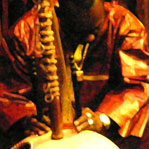 I first became interested in the music of West Africa some years ago after a trip to Paris, where, “sound unheard,” I bought some CDs of music from French-speaking Africa and caught the World Music bug, listening to everything I came upon in the genre. Of course everyone knows that the Blues came from Africa. But knowing it and hearing it are two different things.
I first became interested in the music of West Africa some years ago after a trip to Paris, where, “sound unheard,” I bought some CDs of music from French-speaking Africa and caught the World Music bug, listening to everything I came upon in the genre. Of course everyone knows that the Blues came from Africa. But knowing it and hearing it are two different things.the mali connection toumani diabate & the symmetric orchestra
 I first heard it listening to the album Kulanjan, a collaboration between the great American Bluesman Taj Mahal and the virtuoso Malian kora player Toumani Diabaté. Toumani was born in 1965 in Bamako, Mali into a family of griots (musicians and court historians). Fame has come from both his sheer dexterity and the soulfulness he has captured so beautifully on albums and live. Kulanjan is a 1999 album by blues artist Taj Mahal Diabaté. The title of the album comes from the track "Kulanjan" from the 1970 album of kora music, Ancient Strings, by Toumani Diabaté's father Sidiki Diabaté. Diabeté selected six virtuoso Malian musicians including the brillian Bassekou Kouyate on the ngoni, and took them to record the album with Mahal in Athens, Georgia.
I first heard it listening to the album Kulanjan, a collaboration between the great American Bluesman Taj Mahal and the virtuoso Malian kora player Toumani Diabaté. Toumani was born in 1965 in Bamako, Mali into a family of griots (musicians and court historians). Fame has come from both his sheer dexterity and the soulfulness he has captured so beautifully on albums and live. Kulanjan is a 1999 album by blues artist Taj Mahal Diabaté. The title of the album comes from the track "Kulanjan" from the 1970 album of kora music, Ancient Strings, by Toumani Diabaté's father Sidiki Diabaté. Diabeté selected six virtuoso Malian musicians including the brillian Bassekou Kouyate on the ngoni, and took them to record the album with Mahal in Athens, Georgia.want to see more images? download a pdf portfolio of selects from portaits of world music. Or browse my other work at maxsinger.com
BACK TO TOP

The music of West Africa did not arise sui generis. The region was only one endpoint of an Islamic trading empire that followed the Silk Road out of Central Asia through the Middle East and across North and Saharan Africa. Spices, fabric and jewels were not the only things that passed from hand to hand. There was a great deal of cultural/musical cross-fertilization. As you listen to the musical traditions along this route it’s not hard to hear the blending of scales, chords, styles and instrumentation that must have taken place over hundreds if not thousands of years.
orchestre poly-rythmo de cotonou:
a trans-atlantic recipe.
Take the rhythms that worship the deities of vodun (or voodoo) in their ancestral West African home, Benin. Add the influence of the Agoudas, a group on Benin’s Atlantic coast descended from Brazilian slaves who returned to Africa in the late 1800s. Stir in the Afro-Cuban big-band music that was welcomed in Africa from the 1930s onward, horns and all. Plug in an electric guitar and some biting analog keyboards. Layer on the crackling, clockwork, wah-wahing mesh of James Brown’s funk, along with its adaptation and re-Africanization into Nigerian Afrobeat. Build the melodies on African modes that may well hark back to those vodun chants. And rev up the tempos. — Jon Pareles for The New York Times
BACK TO TOP

Sometimes an artistic project like Afrissippi comes along that seems at once utterly unlikely, yet at the same time completely logical. Unlikely because of the strange sequence of events that it took for it to occur; logical because the connections it explores are ones that were present, if submerged, all along, just waiting to be brought back to life.
afrissippi: a convergence of cultures
One such connection is the one that binds the hill-country blues of north-central Mississippi to Africa in a way that other blues subgenres have not with the rhythms, melodies, and performance styles of West Africa intact. The band Afrissippi is composed of Fulani singer-guitarist from Senegal named Guelel Kumba and three veterans of the hill-country scene, all of whom worked under local mavens like R.L. Burnside or Junior Kimbrough. Kumba first came to Oxford to play at a tribute for Peter Aschoff, a blues scholar who had passed away. Later that day, Kumba jammed with local musicians. "We improvised together on a Junior Kimbrough song and on traditional Fulani melodies," he says. The connection was immediate and unexpected. "It was pure chance, a total surprise."
BACK TO TOP

Susana Esther Baca de la Colina is a prominent Peruvian singer of Afro-Peruvian descent and a key figure in the revival of Afro-Peruvian music within Peru which had previously been little recognized, but which is now regarded as an important part of Peruvian culture.
susana baca: the music of black peru
Baca has contributed much to its international popularity, beginning in 1995 with the release of The Soul of Black Peru which features the Baca song "Maria Lando", and was released by ex-Talking Heads frontman David Byrne's Luaka Bop record label. Baca’s music is a mixture of traditional and contemporary. Her backing band features indigenous Peruvian instruments such as the cajón or “wooden box.” It is possible that the drum is a direct descendant of a number of boxlike musical instruments from west and central Africa. Another theory posits that slaves used boxes as musical instruments to combat contemporary Spanish colonial bans on music in predominantly African areas. In this way, cajóns could easily be disguised as seats or stools, thus avoiding identification as musical instruments.
BACK TO TOP

Acclaimed for both his preservation and modernization of the Paranda musical tradition, Aurelio Martinez's virtuosity is found in his distinctive, penetrating vocals and his talent as a composer.
aurelio martinez: black carib/red carib
Born into a family possessing a long and distinguished musical tradition in the small Garifuna community of Plaplaya in Honduras, Aurelio began playing guitar as soon as he was old enough to hold the instrument. By the age of six he was regularly playing drums at social gatherings. Inspired by his grandmother and his father, Aurelio gathered a vast repertoire, which later enabled him to develop his own style. The Garinagu (singular Garifuna) are descendants of Carib, Arawak and West African people. The British colonial administration used the term Black Carib and Garinagu to distinguish them from Yellow and Red Carib, the Amerindian population that did not intermarry with Africans.
BACK TO TOP
to receive aspect ratio by e-mail, contact me and write signup in the subject line

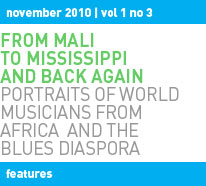

toumani diabaté
(the mali connection)
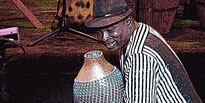
trans-atlantic recipe
(orchestré poly-rhythmo)

afrissippi
(an unexpected surprise)
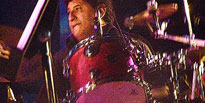
black peru
(hidden music)
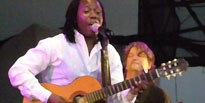
paranda
(black carib/red carib)
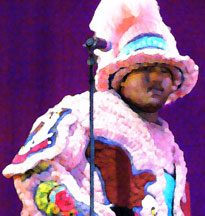
world music
(in the big easy)
World music is often thought of as the music of the OTHER, that is, as distinct from OUR music, the music of the West, of the United States. I beg to differ. Consider the Wild Magnolias, one of the Mardi Gras Indian tribes of New Orleans. The Mardi Gras Indians are black working-class groups that are part secret and spiritual society and part neighborhood social club. Fifteen or so tribes parade on Mardi Gras Day, chanting, singing, and beating percussion instruments. They are costumed in elaborate, handmade outfits that fancifully recall the dress of Native Americans, complete with feathers, ornate beadwork, and enormous headdresses. The origins of this tradition - which has striking parallels in the Caribbean, especially Trinidad - have yet to be conclusively documented. African, Kreol, Indian, and Spanish roots have been suggested, and some synthesis of all these sources seems likely and is cited as yet another instance of New Orleans’ status as the northern frontier of Caribbean culture.
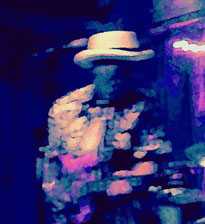
little freddie king
Born Fread Eugene Martin in McComb, Mississippi on July 19, 1940, he took the nom-de-plume Little Freddie King in the late ’60s. King, who spent his first three decades in New Orleans literally soaking up more life and near death—shootings, stabbings, jail sentences, drinking, all night rambling and plenty of hard work—than most folks who make it to a healthy 67, takes a philosophically humble view of his recent good fortune. “His wardrobe is Canal Street finery at its most swirling, be it purple, yellow, bright red, royal blue or any combination thereof, and is as sartorially splendid as his music is primal.”
bluesmen of new orleans
Think of the route of the Blues: from West Africa on a slave ship to the Caribbean and on to the slave markets of New Orleans. Before the Blues traveled up the river to Memphis, St. Louis and Chicago, the Blues was the delta and the delta was New Orleans. And there the Blues are still alive and well as evidenced by two of my favorite Nola Bluesmen.
john mooney
John Mooney was born raised in Rochester, New York, and he left home when he was 15. The following year, he met Son House, a Mississippi bluesman who became a huge musical influence on him. In 1976, Mooney moved to New Orleans, and soon he was playing with host of musicians in the New Orleans R&B circuit including Earl King, The Meters, Snooks Eaglin and Professor Longhair. His album Big Ol' Fiya was nominated for Blues Music Awards' "Contemporary Blues Album of the Year" in 2006.

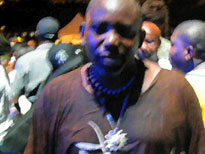
behind the pictures
(faces in the crowd)
I was at Lincoln Center Out of Doors to hear the music and photograph the musicians, but my attention kept being drawn the faces in the crowd. (See this month’s video)
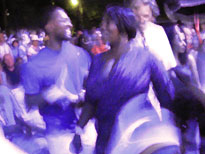
all photographs
copyright max singer
2006-2010.
website: www.maxsinger.com
contact: max@maxsinger.com